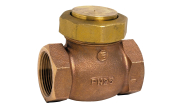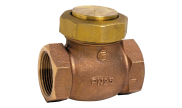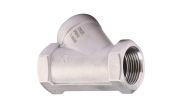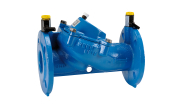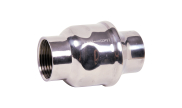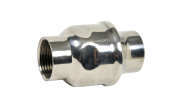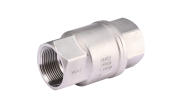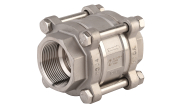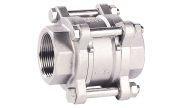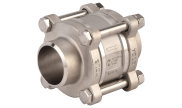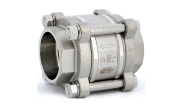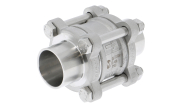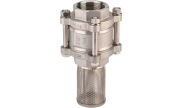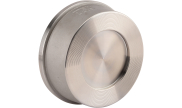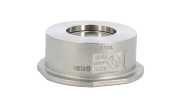Local Storage seems to be disabled in your browser.
For the best experience on our site, be sure to turn on Local Storage in your browser.
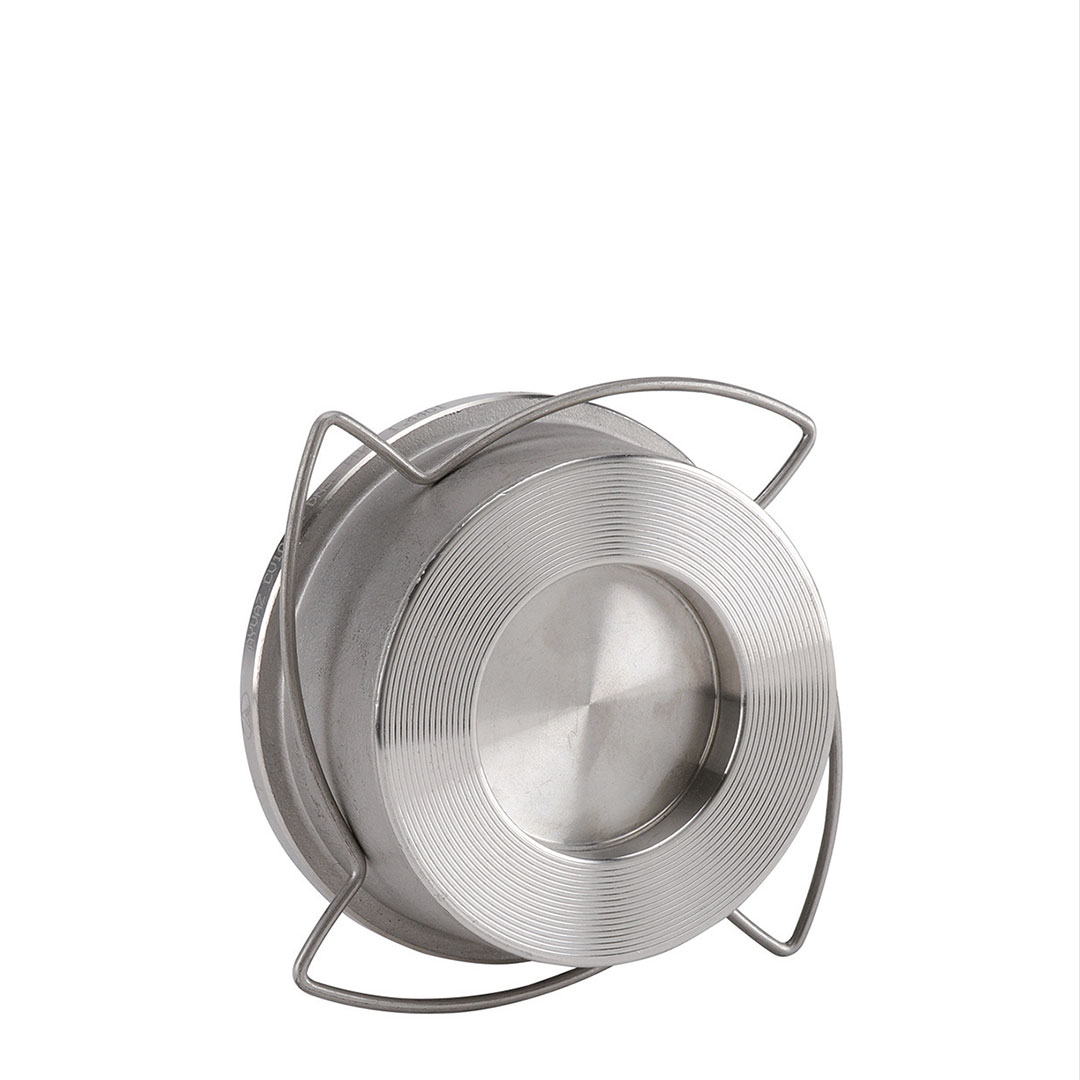
Check valves for industry
Check valve: what is it used for?
A check valve, also known as a clack valve or non-return valve, is a unidirectional plumbing fitting. Its role is to let a flow of liquid, gas, air or steam move in one direction only, inside a pipe or a duct. The check valve is used to automatically stop the flow in case of back flow. This is a key component when it comes to pump protection inside hydraulic systems, whether they are open (for suction or drainage) or closed (circulation, overpressure).
Description of a check valve
The check valve is a two-port device: one on the inlet side, the other one on the outlet side. Most of the time, its body is made out of metal, such as cast iron, ductile iron, unleaded bronze, stainless steel, or brass for example, depending on the type of fluid. The flow is controlled thanks to the sealing element inside the body.
There are multiple sorts of check valves with various types of mechanisms:
- Piston check valves or vertical lift check valves;
- Swing check valves;
- Spring check valves;
- Ball check valves;
- Wafer swing dual plate check valves;
- Wafer spring check valves;
- Anti-pollution check valves.
What are the specific features of a check valve?
Check valves do not need any human help nor motorized system to operate. For example, in case of a power failure on a site, the check valve will keep on working. Some check valves depend fully on gravity: the sealing element, because of its weight, will initiate closure before any reverse flow can occur. These valves can only be mounted in horizontal position, or in vertical position with an ascending flow. With other models of check valves, a spring closes the sealing element before the backflow. Closing the valve quickly will ensure any backflow is blocked before being too fast, thus avoiding water hammers.
Fields of application for the check valve
Check valves are quite ordinary items, whether in domestic or industrial applications. Among the most obvious ones are the chemical, pharmaceutical and petrochemical industries. Anti-pollution check valves are widely used in drinking water networks, to prevent any potential contamination of the public network that could come from a private system (whether domestic, communal or industrial).

